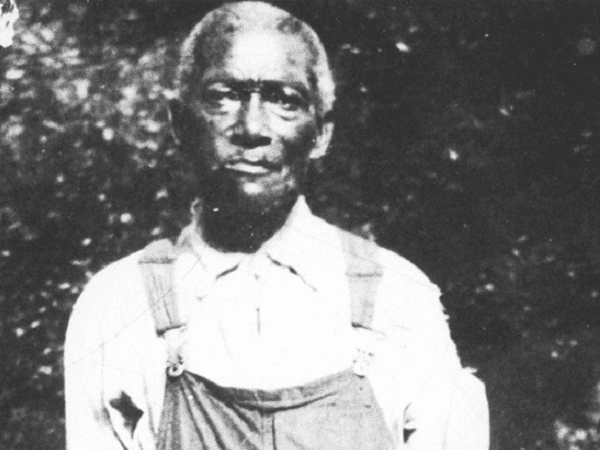We are fortunate that the pages of America’s newspapers have recorded over 2 billion stories of Americans from the last three centuries. GenealogyBank’s Historical Newspaper Archives contain these records from 1690 to today.
Every day I sift through the stories of your ancestors and mine – preserving and passing down these stories so they are easily findable by the rising generation.
For example, I have found hundreds and hundreds of contemporary biographical sketches of former slaves. Some give details of their lives and others give simply the facts of their lives in their obituaries.
I want these stories to be told and retold – remembered by all of us and easily discoverable by descendants and kindred.
Take a minute and read their stories.
Cole, Henry (1810-1895)
Ohio
He was tossed into a fireplace and severely burned and disfigured.

According to his obituary:
“Notwithstanding being so terribly crippled he, by his shrewdness and intelligence, succeeded in securing a comfortable fortune.”
Read his story in the Repository (Canton, Ohio), 23 July 1895, page 7.
Garnett, Henry Highland, Rev., D.D. (1816-1882)
Maryland, New York
He:
“…was an African-American abolitionist, minister, educator and orator. Having escaped with his family as a child from slavery in Maryland, he grew up in New York City. He was educated at the African Free School and other institutions, and became an advocate of militant abolitionism. He became a minister and based his drive for abolitionism in religion.”
–Wikipedia

Read his story in the Patriot (Harrisburg, Pennsylvania), 11 March 1882, page 1.
Hayden, Harriet, Mrs. (1819-1893)
Kentucky, Massachusetts
“African-American abolitionists who had escaped from slavery in Kentucky; it is located in Beacon Hill, Boston. They maintained the home as a stop on the Underground Railroad, and the Hayden’s were visited by Harriet Beecher Stowe as research for her book, Uncle Tom’s Cabin (1852). Lewis Hayden was an important leader in the African-American community of Boston; in addition, he lectured as an abolitionist and was a member of the Boston Vigilance Committee, which resisted the Fugitive Slave Act of 1850.”
–National Park Service
It is said that John Brown (John Brown’s raid of Harper Ferry) held a meeting at her home, which is listed on the Black Heritage Trail.
Read her story in the Salt Lake Tribune (Salt Lake City, Utah), 28 December 1893, page 3.
Langston, John Mercer (1829-1897)
Missouri, Ohio, Virginia
“One of the most prominent African Americans in the United States before and during the Civil War, John Mercer Langston was… one of the first African Americans to hold elective office in the United States (he became Brownhelm, Ohio, township clerk in 1855), Langston topped off his long political career by becoming the first black man to represent Virginia in the U.S. House of Representatives.”
–U.S. House of Representatives
Read his story in the New York Tribune (New York City, New York), 16 November 1897, page 8.
Mathis, Nathan “Uncle” (about 1822-1937)
Mississippi
Read his story in the State Times (Baton Rouge, Louisiana), 14 January 1937, page 17.
“Uncle Jolly,” “Old Pirate” (about 1797-1897)
Louisiana, Texas, West Indies
He witnessed pirates trying to overthrow his master’s ship.
Read his story in the Bay City Daily Tribune (Bay City, Michigan), 3 April 1897, page 8.
Parks, James “Uncle Jim” (about 1843-1929)
Virginia, Washington D.C.
According to his obituary, he was buried in Arlington National Cemetery:
“…out of recognition of his service to the Government.”
He:
“…was the slave of George Washington Parke Custis… He watched over Arlington… before the Civil War. [He] knew Gen. Robert E. Lee… [and] following the war, settled there… the remainder of his life. Five of his sons served with the American Forces during the World War.”
Read his story in the Evening Star (Washington D.C.), 23 August 1929, page 9.
Barr, Caroline “Mammy Callie” (1840-1940)
Mississippi
According to the Wikipedia article about William Faulkner:
“His family, particularly his mother Maud, his maternal grandmother Lelia Butler, and Caroline ‘Callie’ Barr (the black nanny who raised him from infancy) crucially influenced the development of [William] Faulkner’s artistic imagination.”
–Wikipedia
Read her story from the State (Columbia, South Carolina), 5 February 1940, page 8.
Bruce, Blanche Kelso (1841-1898)
Mississippi, Ohio, Virginia, Washington, D.C.
He was a U.S. Senator from Mississippi, serving from 1875 to 1881. Very active in politics, he was elected to multiple positions:
“At the 1880 Republican National Convention in Chicago, Bruce became the first African American to win any votes for national office at a major party’s nominating convention, with eight votes for vice president.”
–Wikipedia
Read his story in the New York Herald Tribune (New York City, New York), 18 March 1898, page 7.
Carter, Fannie “Aunty” (1830-1932)
Tennessee, Texas
“Former Slave, 102, Passes.” Born in slavery in Murry County, Tennessee, and moved to Dallas, Texas, in 1845. After the dress she wanted to be buried in was stolen, Mrs. John Field, the daughter of her previous owner, Obadiah Knight, gave her a shroud which she “treasured above all other remaining possessions and which she kept constantly with her until death.”
Read her story in the Dallas Morning News (Dallas, Texas), 16 October 1932, page 7.
Related Articles:
